Passing a technical checkup at the end of the year is a thankless task. Forgetful motorists form queues at maintenance stations closer to the holidays, and the employees of these very stations are in no hurry, referring to the already New Year mood. It just so happened that the author of these lines forgot about the mandatory procedure, and there is less and less time left until the end of the month, but having stopped by one of the metropolitan stations the other day and found a queue of cars, he was unexpectedly surprised by the words of a man in the form of "Beltekhosmotra"

- What first aid kit do you have? If the old one, then with it only until December 31, you can go through the inspection, - unexpectedly declared the employee of the diagnostic station No. 36. - From January 1, we accept cars only with a first-aid kit with a new list of medicines. With the old one you will not pass the inspection!

Frankly, such a statement from a competent person interested. Yes, and I, as, incidentally, I think, and many other motorists have never used a first aid kit for more than 10 years of driving (fortunately). Yes, and what lies in an inconspicuous gray box and what year the preparations are there - I definitely cannot name! Never before have the station employees asked to show the contents of the first-aid kit when going through MOT. Visually make sure that she is - that means that everything is in order with her.
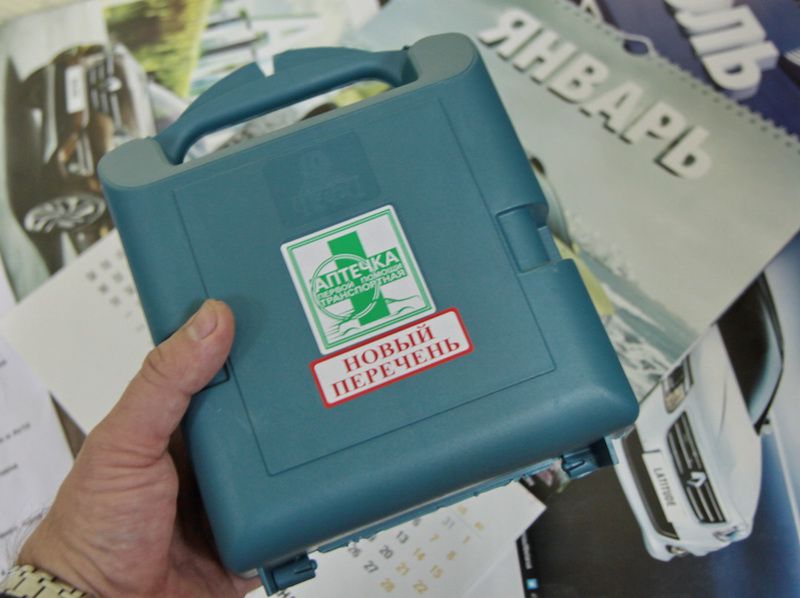
And by the way, the kit of the first-aid kit, as well as the expiration dates of medicines in it, should be given special attention by the employees of the diagnostic stations when passing the technical inspection! It turns out that this is only in words? My personal experience of passing MOT says yes. However, traffic police officers do not have the right to examine its contents (for the presence of expired drugs, for example). In the event of an inspection, the inspector can make sure that there is a first-aid kit, but he has no right to study its composition according to the list! However, this is already separate story, we will return to the heart of the matter, namely to the new list of drugs in the car first aid kit.
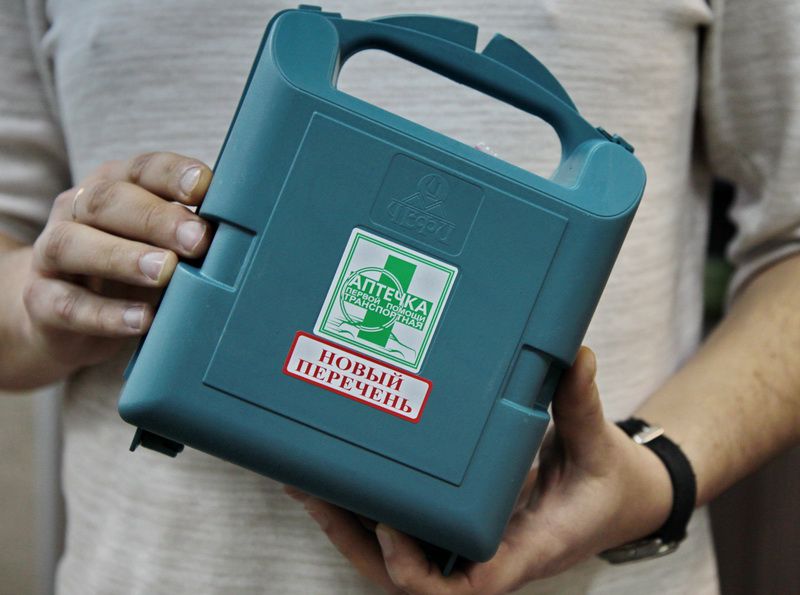

Recall that the Ministry of Health in December 2014 raised the issue of the actual filling of car first aid kits. Then it was decided to remove validol and glyceryl trinitrate (a medicine used for heart attacks, strokes and high pressure) and add more dressings. True, the old first-aid kits with the current filling were allowed to be used until January 1, 2017. Well, from this date, motorists will have to revise the contents of the first-aid kits. Avtomalinovka found out which drugs appeared, which ones can be safely thrown away and how much it will cost the driver to complete the first-aid kit on his own by purchasing the necessary funds in any pharmacy.

Back in 2007, acetylsalicylic acid, drotaverine, loratadine, metamizole sodium, paracetamol, sulfacetamide solution, citramone disappeared from the kits. The Ministry of Health explained this decision by the fact that it is problematic to store these medicines in a car in proper conditions. I repeat, now from first aid kits you can remove validol and glyceryl trinitrate... In accordance with the new rules, a first aid kit must contain:
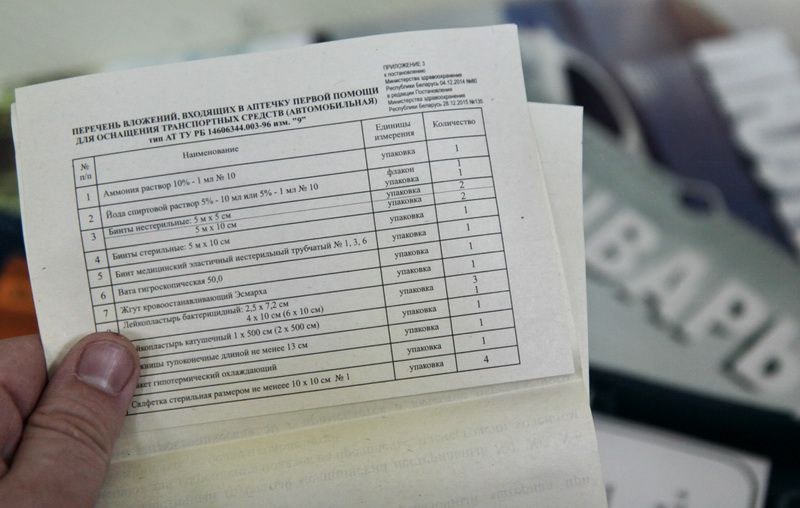


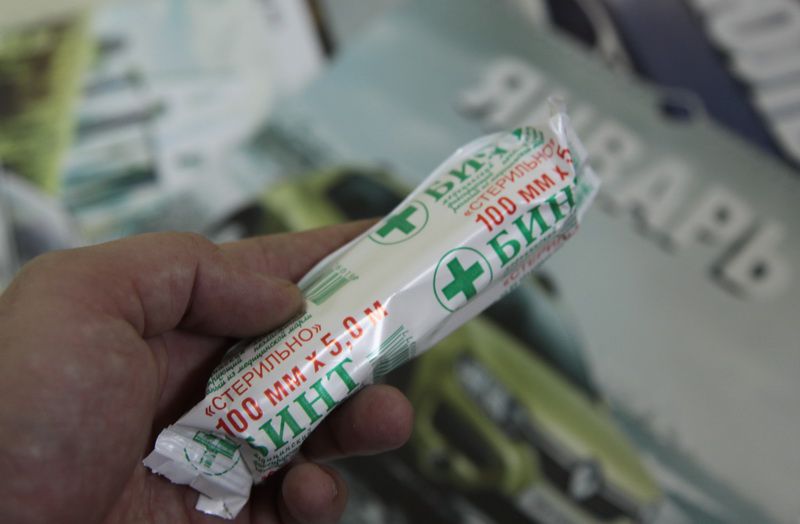

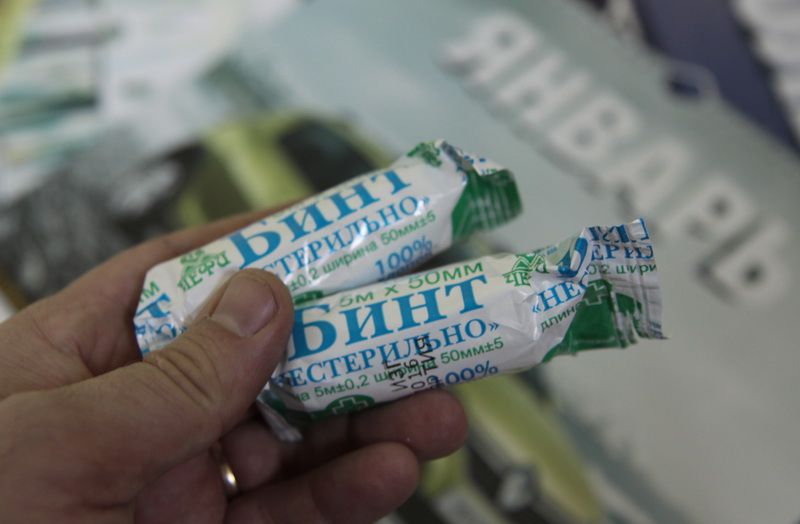
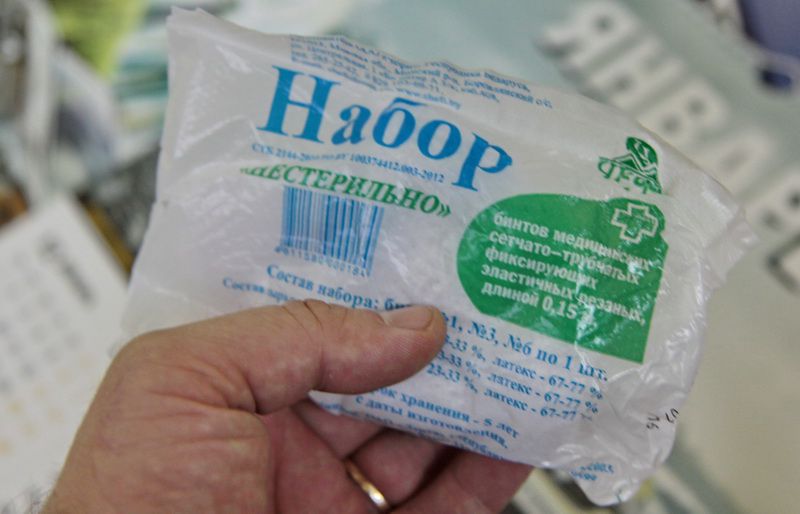
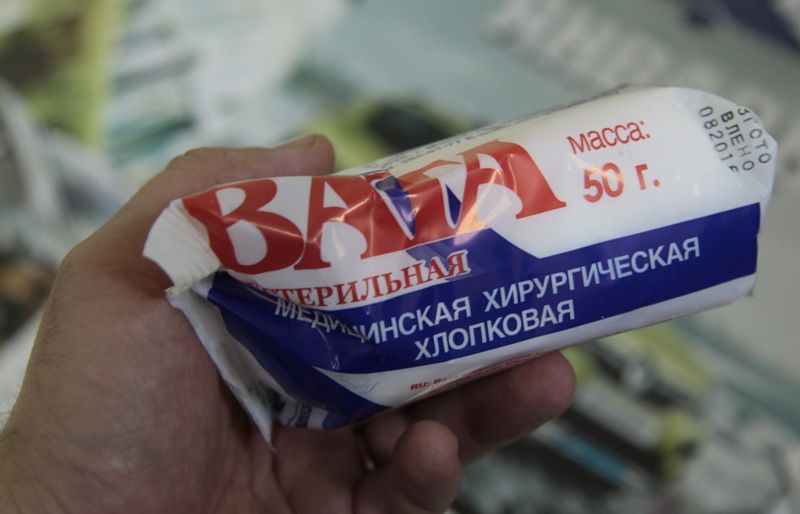
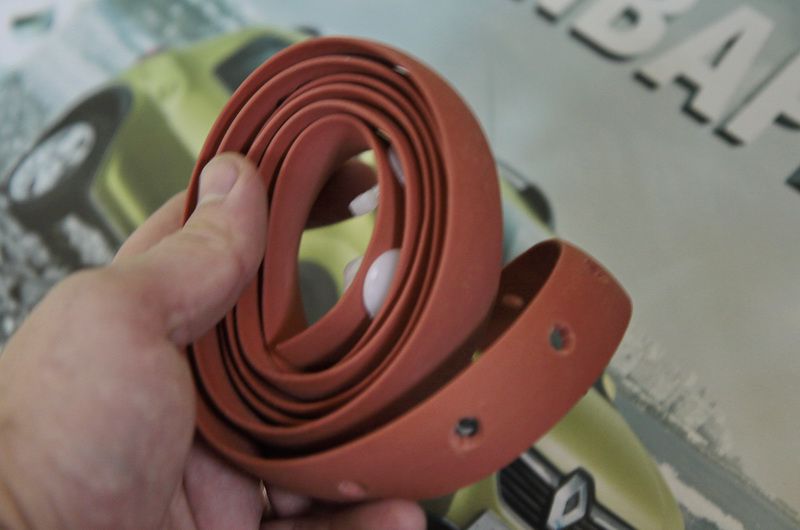

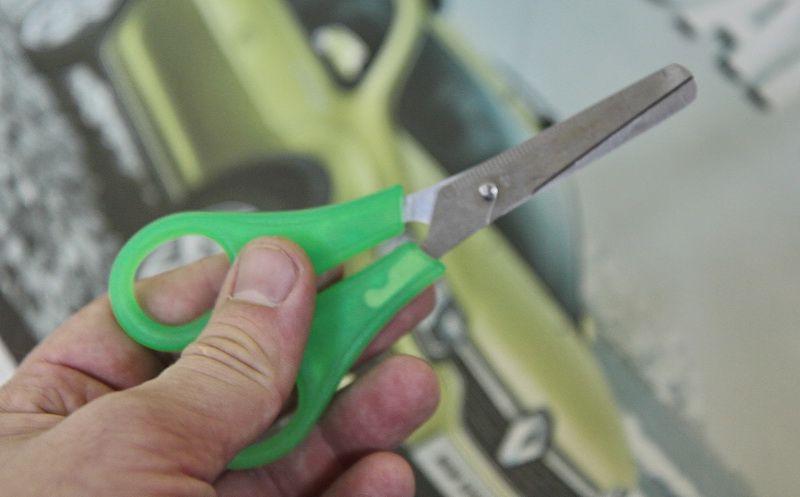
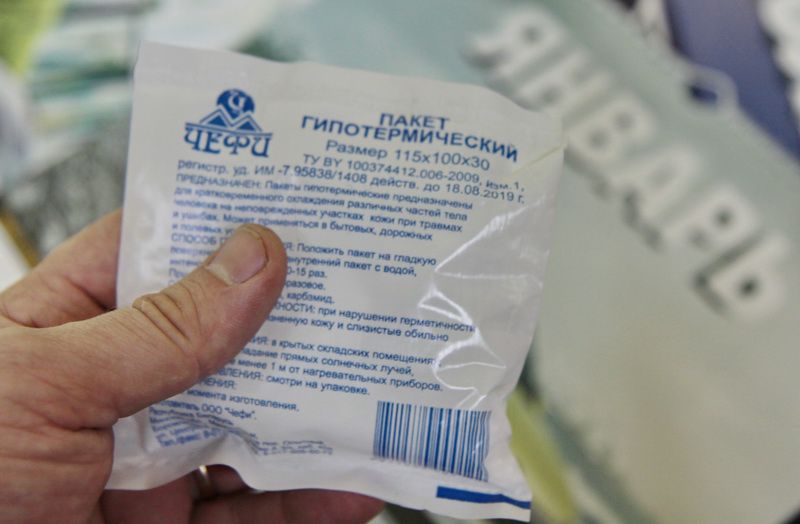

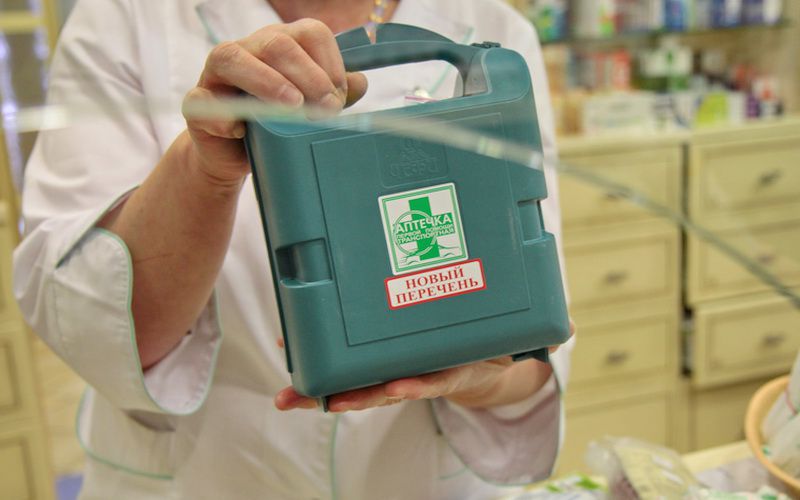
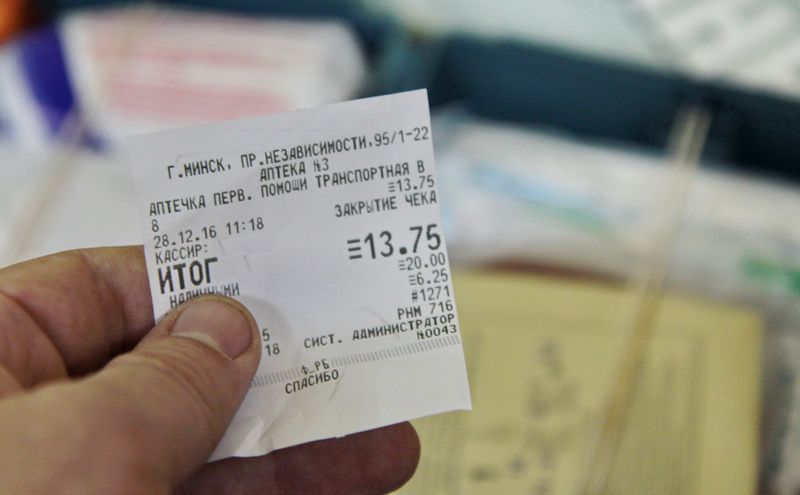
It turns out that you will have to buy an alcohol solution of iodine (60 kopecks), Esmarch's tourniquet (1.35 rubles) and several bandages. Well, you can not bother and buy a ready-made first-aid kit with a new list of drugs for 13.75 rubles. How to proceed is up to you. But in any case, the upgrade will have to be done, otherwise after January 1, 2017, you will not receive a mark in the maintenance certificate.
: The composition of the standard automotive first aid kit will change. Until 2017, they made it possible to revise medicines and bring everything in line with the rules. While there is still time to go to the pharmacy, let's remember what it should be car first aid kit since the new year.
What should be in a new first aid kit
The composition of the car first-aid kit is determined by the decree of the Ministry of Health "On the establishment of lists of first-aid kits, first-aid kits medical care, investments included in these first-aid kits, and determining the order of their completing ”No. 80 dated December 4, 2014. What should be equipped with a first aid kit in a car:
- ammonium solution 10% - 1 ml No. 10 (fl. 10 ml, 40 ml) or ammonia - 1 package;
- iodine alcohol solution 5% - 10 ml (40 ml) or 5% - 1 ml No. 10;
- sterile medical bandage 5 m by 10 cm - 1 package;
- non-sterile bandages: 5 m by 5 cm and 5 m by 10 cm - 2 packs each; sterile bandage 5 m by 10 cm;
- medical elastic non-sterile tubular bandage No. 1, 3 or 6;
- hygroscopic sterile cotton wool 50 g;
- esmarch hemostatic tourniquet;
- bactericidal adhesive plaster: 2.5 × 7.2 cm - 3 packages, 4 × 10 cm (6 × 10 cm) - 1 package;
- reel adhesive plaster 1 × 500 cm (2 × 500 cm);
- blunt scissors at least 13 cm;
- portable hypothermic cooling package;
- sterile napkins with a size of at least 10 × 10 cm No. 1 - 4 packages.
What changed
Validol, glyceryl trinitrate, acetylsalicylic acid, drotaverine, loratadine, metamizole sodium, paracetamol, sulfacetamide solution, citramone disappeared from the usual configuration. This is due to the fact that it is impossible to store these drugs in the car in proper conditions, including temperature.
The changes also affected the packaging of bandages and adhesive plasters. Now in the first-aid kit, among other things, it is necessary to have two packs of non-sterile bandages measuring 5 × 5 cm and 5 × 10 cm. Cotton wool should be sterile - 50 g. The composition of the bactericidal adhesive plasters is as follows: 3 pcs. dimensions 2.5 × 7.2 cm and 1 pc. size 4 × 10 cm or 6 × 10 cm.Related adhesive plaster should be 1 × 500 cm or 2 × 500 cm in size.
Where to buy and how much does it cost
First aid kit for equipping vehicle can be purchased already assembled at many pharmacies. One point: car owners need to make sure that the kit contains all the necessary medicines so that it meets the standards adopted in Belarus. As a rule, there are no problems with this. The cost of a ready-made first aid kit with everything you need is around 13 rubles (130,000).
You can also review the existing first-aid kit and buy everything you need. So, for example, an alcoholic solution of iodine in the right amount costs about 60 kopecks (6000). The tourniquet will cost about 1 ruble 35 kopecks (13,500).
Will they check
The contents of the first aid kit are checked during the technical inspection. The examiner can make sure that every medication and remedy from the list is available, up to the number of packs of patch - be prepared for this. After that, a traffic police officer can ask about the presence of a first-aid kit in case of a check. The question is precisely whether there is a first-aid kit in the car - the inspector will not check its composition according to the list. It is assumed that it is in the interests of the driver himself to ensure that the first-aid kit has everything he needs.
From January 1, 2017, all motorists are required to have first aid kits with a new list of drugs and medical supplies. We figure out what to remove and what to add to the first aid kits.
- Do you have an old first-aid kit? With her until December 31, you can undergo a technical check-up, - the pharmacist unexpectedly pleases in response to a clarifying question whether they have an auto first aid kit with a new list of medicines.
The complete set of the first-aid kit, as well as the expiration dates of medicines, is given special attention by the employees of the diagnostic stations during the technical inspection. By the way, many drivers check the expiration dates of medicines and the composition of the first-aid kit just before going through a technical inspection. As shown by a small survey of motorists, many drivers have never (fortunately) used a first-aid kit for decades of driving experience.
The cost of an auto first aid kit is 13.75 rubles. By the way, drivers can complete the first aid kit on their own by purchasing the necessary funds.
Recall that the Ministry of Health updated the filling of transport first-aid kits back in December 2014. Then the department adopted a decree "On the establishment of lists of first-aid kits, first-aid kits, first-aid kits, investments included in these kits, and determining the order of their completing" No. 80 dated December 4, 2014. However, the Ministry of Health allowed the use of previously purchased first-aid kits until January 1, 2017. The document came into force on January 1, 2015. Later, the Ministry of Health once again clarified the list of investments by Resolution No. 135 of December 28, 2015.
What to remove from the first aid kit
From January 1, 2017, motorists can safely remove validol and glyceryl trinitrate (a medicine used for heart attacks, strokes and high blood pressure) from the medicine cabinet. IN new first aid kit more dressings.
Many medicines from Belarusian auto medicine kits disappeared 9 years ago. In addition to validol and glyceryl trinitrate, acetylsalicylic acid, drotaverine, loratadine, metamizole sodium, paracetamol, sulfacetamide solution, citramone were removed from the auto pharmacy. The Ministry of Health explained this by the fact that it is impossible to store these medicines in a car under proper conditions, including temperature.
What should be in the first aid kit

- Instructions for the use of attachments, which can be bought at the pharmacy;

- ammonium solution 10% - 1 ml No. 10 (fl. 10 ml, 40 ml) or ammonia - one package. The drug is used for fainting to bring a person to life. It is necessary to moisten a small piece of cotton wool or gauze with a solution and carefully bring it to the nostrils;

- alcohol solution of iodine 5% - 10 ml (40 ml) or 1 ml No. 10, one package. Iodine is used externally as an antiseptic for disinfecting scratches, abrasions, wounds by treating the edges of the wound;
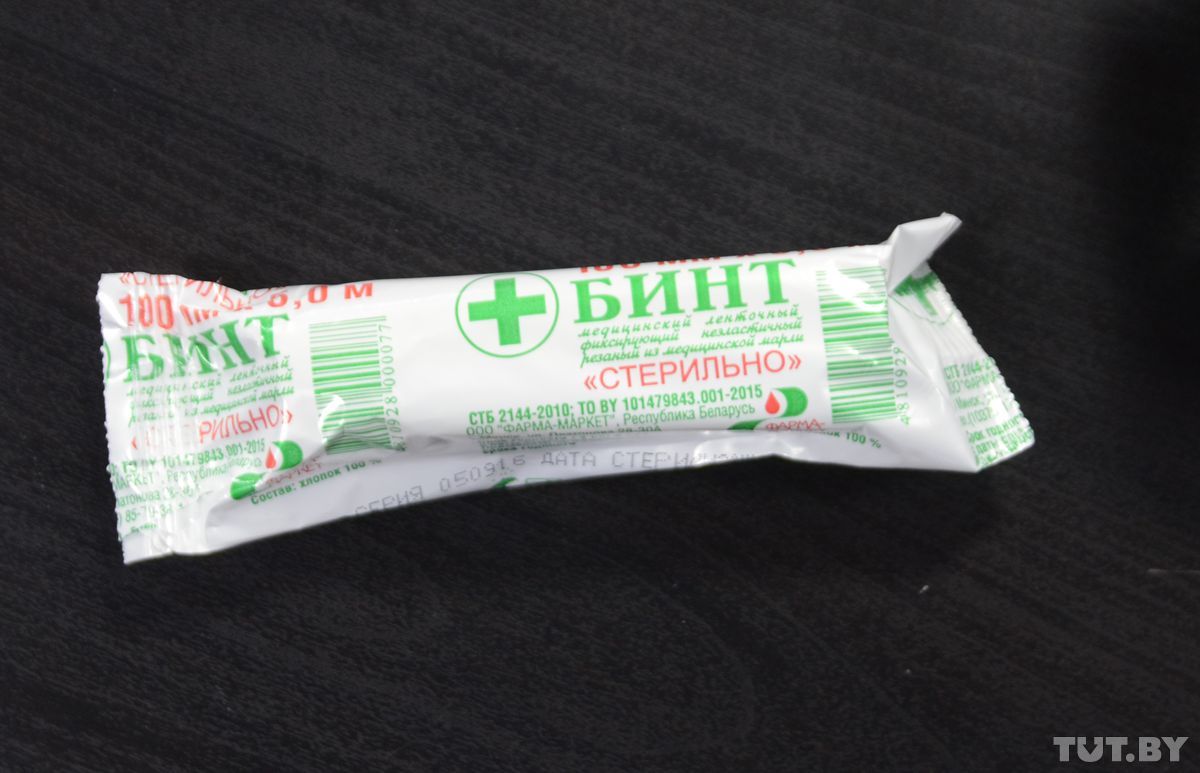
- sterile medical bandage 5 mx 10 cm, one package. Special packaging guarantees the sterility of the bandage during the entire shelf life. It can be used for open wounds, for fixing bandages;

- medical non-sterile bandage 5 mx 10 cm, two packages, as well as non-sterile medical bandage 5 mx 5 cm, also two packages. A non-sterile bandage should only be used for undiscovered wounds. A bandage can be used to secure bandages;

- medical elastic tubular non-sterile bandage No. 1, 3, 6. All three types are used for different types fixation of bandages. Bandage No. 1 is used mainly for fixing bandages on the fingers of adults, in addition, for fixing bandages on the hand or foot of children;
elastic tubular bandage No. 3 is used to fix the bandage on the shoulder, as well as on the elbow or ankle joint of adults or on the knee joint of children;
bandage No. 6 is used to fix the bandages on the chest, abdomen, thigh and pelvis of adults;

- absorbent cotton wool, 50 g. It is used as a dressing, also used for cotton-gauze dressings;
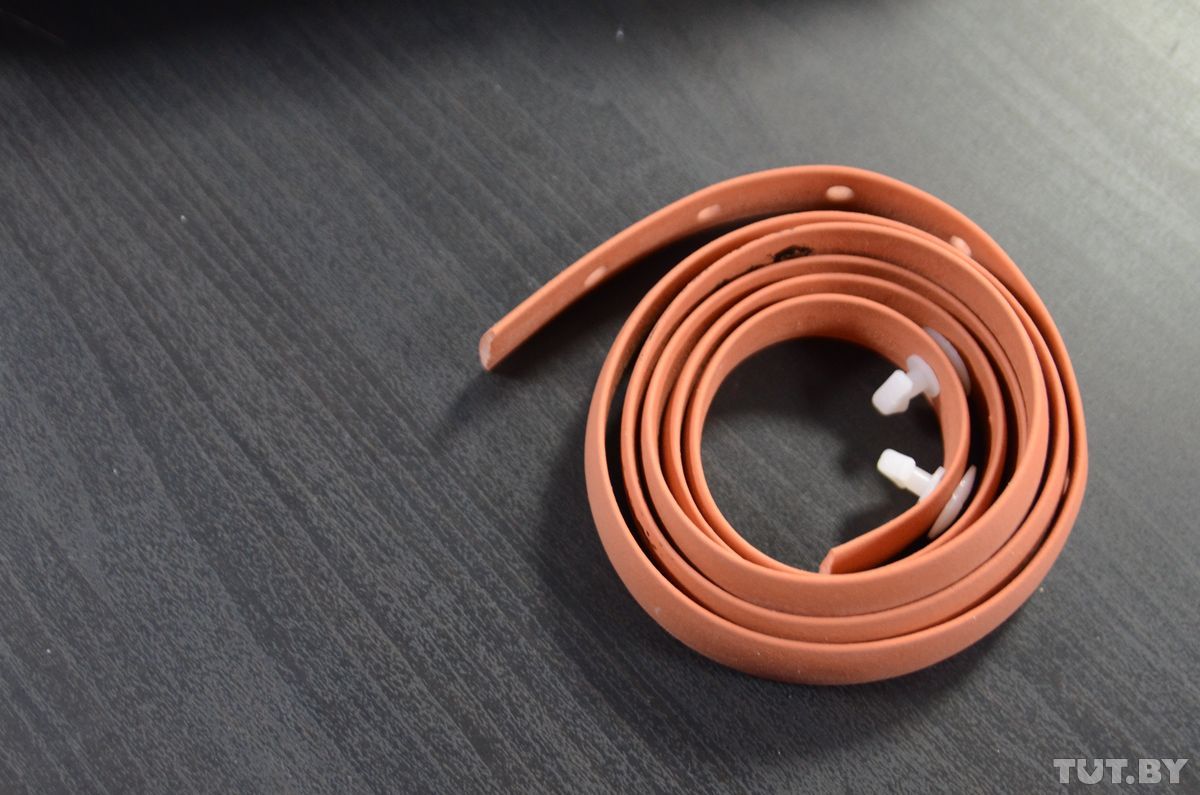
- Esmarch styptic tourniquet. It is necessary to stop bleeding from the vessels of the limb. To do this, the limb is pulled in a circle and the tissues are squeezed together with the blood vessels above the wound. In this case, it is imperative to indicate the exact time of the application of the tourniquet and leave a note;

- bactericidal adhesive plaster: 2.5x7.2 cm - 3 packages and 4x10 cm or 6x10 cm - 1 package. The patch is used for wounds, abrasions, cuts and other damage to the skin. The patch is applied to the damaged area of \u200b\u200bthe skin with a gauze pad, which is impregnated with an antiseptic;

- reel adhesive plaster 1x500 cm or 2x500 cm, one package. It is mainly used to hold (fix) dressings, as well as for minor skin lesions;

- blunt scissors at least 13 cm. Many drivers forget that there are scissors in the first aid kit. First of all, they are intended for cutting bandages, dressings, as well as clothes for first aid;
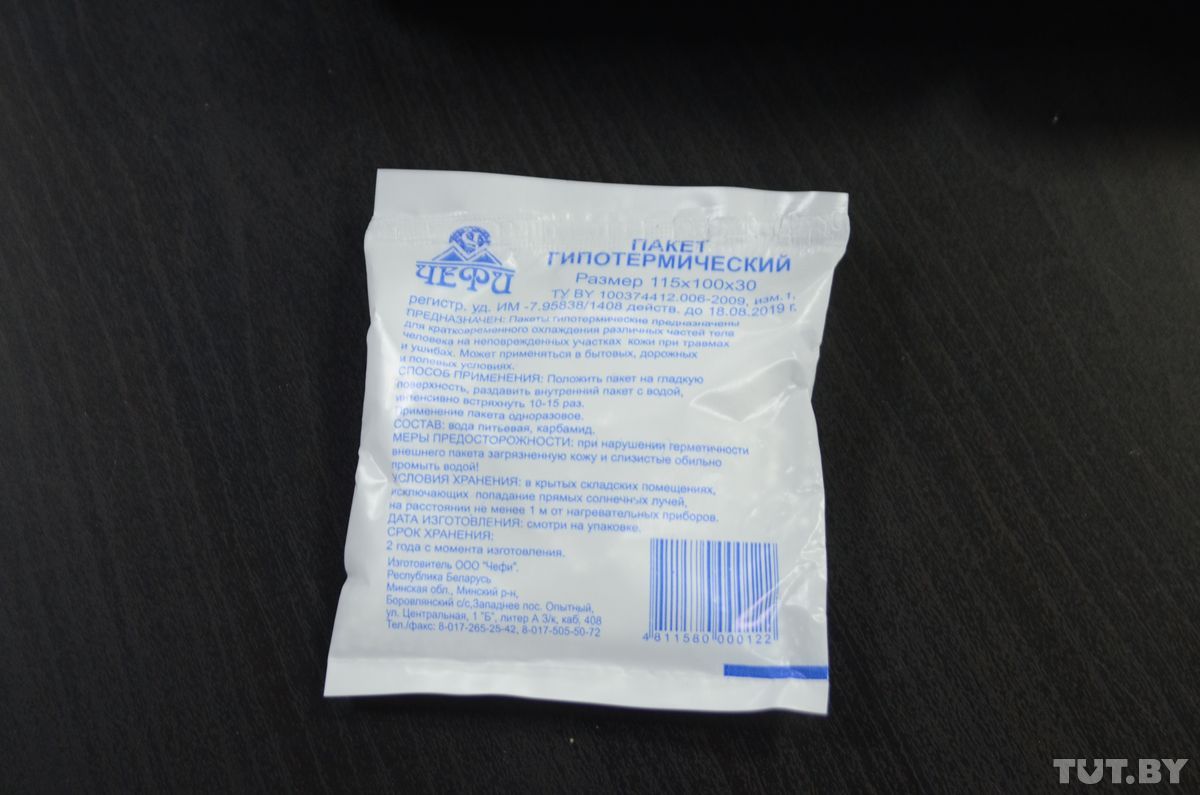
- portable hypothermic (cooling) bag, one pack. It is used to cool the impact sites, as well as for injuries, bites, etc. Stops bleeding, reduces the inflammatory response. In order to activate the product, the package must be crushed and shaken;

- sterile napkins at least 10x10 cm No. 1, 4 packs. They are used for treating the skin (do not stick to the wound surface), in addition, it can be used as a personal hygiene product.
In addition to these drugs, you can add any other drugs that you may need on the road. But motorists must take into account whether the use of a particular drug while driving is permitted. This information can be obtained in the leaflet for the medicinal product.
Another point worth paying attention to motorists traveling by car. In some countries, the medicines approved for use in our country may be a narcotic substance, the possession of which is criminalized. Therefore, it will not be superfluous, going on a trip, to review your first-aid kit and lay out all unwanted drugs in advance.




